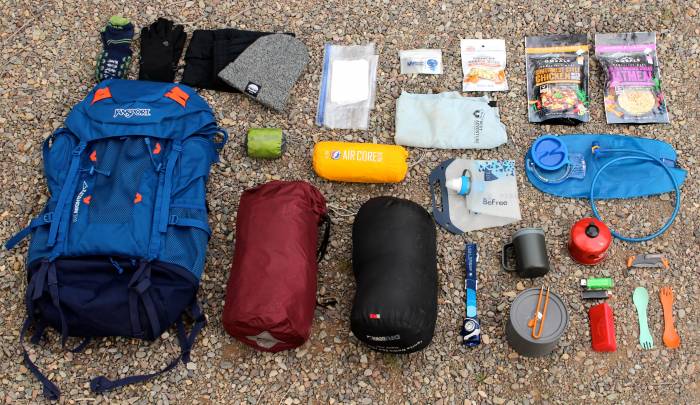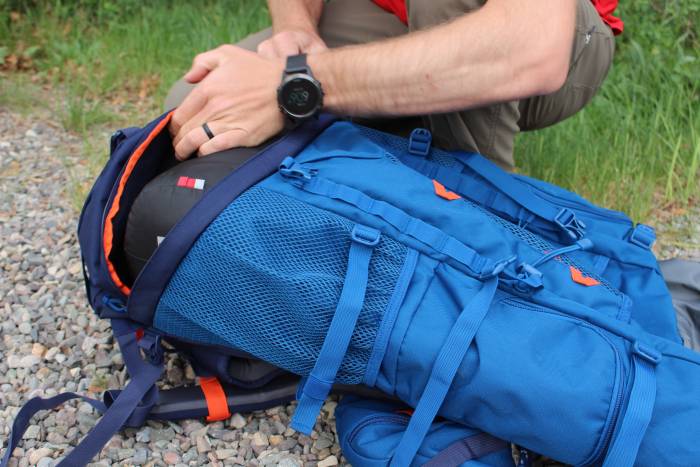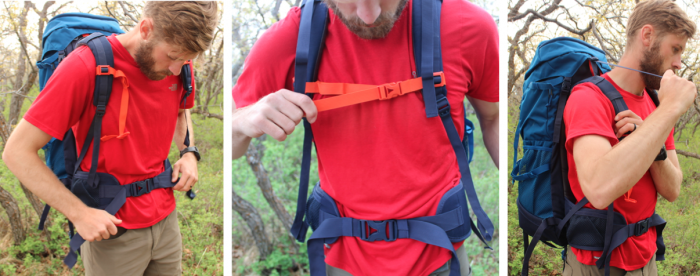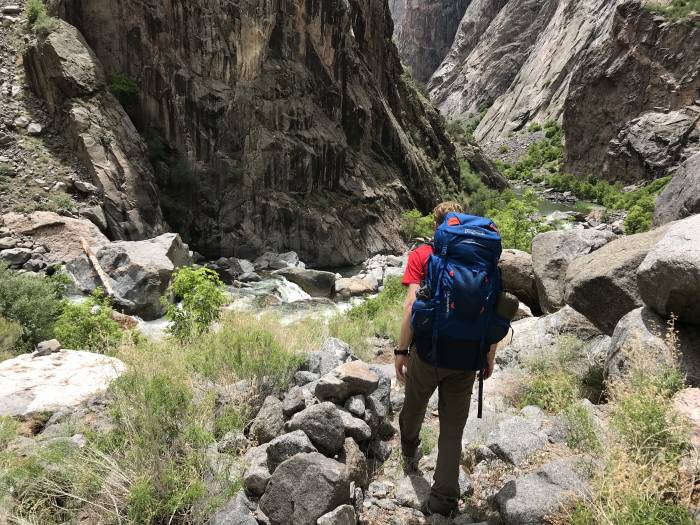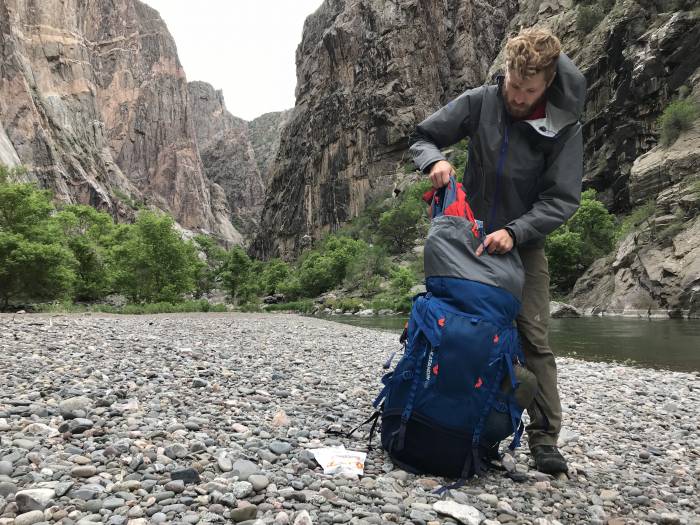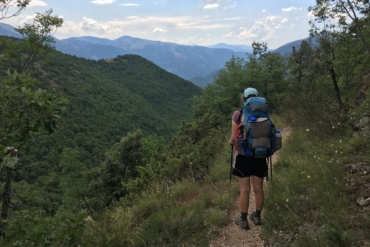Backpacking is an excellent way to get away from the crowds, access remote destinations, and wake up to epic vistas. It feels great to earn your campsite for the night. Here’s our beginner’s guide for getting out there.
Planning
A well-planned trip can make the difference between an unforgettably good trip and an unforgettably bad one.
Start Simple
You want your first few backpacking experiences to be enjoyable and manageable. Start with a simple overnight trip with low mileage, ideally on a trail you’re already familiar with. For first-timers, we’d recommend finding a route that’s 5 or less miles to camp and a similar distance back. Don’t forget to factor in for elevation gain and loss, which can make miles feel much longer.
Get Informed
Once you decide on the area and trail (make sure overnight stays are allowed), talk to a ranger for information about the area and the campsite situation. They’ll know whether there are designated tent sites or if you’re free to set up anywhere. Then, acquire a permit if necessary and be sure you have a detailed paper map. Don’t rely on your phone for GPS, as service might get spotty or your battery could die.

Check the Weather
Check the weather the day before your trip. Weather.gov allows you to select a location on the map, providing accurate location data and forecasts. You’ll want to avoid weather surprises as best as you can or pack accordingly (tarp, rain jacket, etc.).
Notify Someone
Tell a friend or family member about your plans. In case of an emergency, someone should know where you’re going and when you plan on being back.
Start Packing Early
Start packing a few days prior to your departure. This will give you time to make any last-minute store runs for gear or food you’re missing.
Packing
A decent amount of gear goes into a backpacking trip. If you’re just starting out, consider renting gear from an outfitter or borrowing from friends.
You may want to buy your own backpack early on, though, as you can dial in the fit without futzing with a friend’s settings. JanSport’s new $130 Katahdin 70 pack is a low-cost cost option with plenty of storage space and compartments.
As for the rest of the gear needed, the list varies depending on the climate and distance. A general packing list is below. We suggest laying everything out and then packing it in your backpack to make sure nothing is left out.
Backpacking List
- Backpack
- Tent with rain fly
- Sleeping bag
- Sleeping pad
- Pillow
- Water bladder or bottle
- Water filter (or purifying tablets)
- Snacks
- Meals (instant, like Omeals or Mountain House, or otherwise)
- Pot
- Spork
- Personal stove
- Fuel
- Two lighters
- Small first-aid kit
- Layers
- Rain gear
- Headlamp
- Small knife or multitool
- Toilet paper
- Digging tool
- Pack out trash bag
- Bear rope system or bear safe (if in bear country)
Count Grams, But Don’t Die By Them
Be smart about what you’re bringing. You have to carry every pound for every step, so make sure each piece of gear counts. Consider the weight of each item you pack and chose the lightest available option that will do the job.
You want to be comfortable. Make sure you have enough layers to stay warm in every expected condition. However, don’t carry extra clothing. For a single night, or even a few days, you should be fine in the same clothes. Embrace the dirt a little! The exception is socks and underwear. Extra socks are great, and really light!
Invest in Lightweight Essentials
The heaviest and bulkiest items in your pack are probably your tent and sleeping bag. Investing in lightweight essentials like those will quickly shave pounds from your load.
Heavy Items on Your Hips
Put the heaviest items at the small of your back, usually right above your sleeping bag riding on the bottom. This will put the bulk of the weight on your hips and legs instead of your shoulders. Lighter and smaller items can be used to fill spaces in your pack.
Once everything is loaded, streamline it all by tightening the straps around the backpack. Be sure to adjust your shoulder straps, hip belt, and load-bearing straps until you find a comfortable fit with the weight distributed evenly from your hips to your shoulders.
When You’re Out There
Your plan is set and your bag is packed. Now it’s time to hit the trail and enjoy the fruits of your labor.
Start Early
Even if you don’t have far to hike, begin your trek early. It’s harder trying to spot your backcountry campsite by night and setting up camp in the dark. Allow for ample time to set up, enjoy, and relax at camp. Let your hard work pay off.
Enjoy Yourself Along the Way
Hike slowly and enjoy the view and experience. You won’t be able to move as fast as you typically can without a full backpack. Once you’re past the day-hiking crowd, enjoy the solitude and watch for wildlife.
Find Camp, Survey the Area
Keep an eye on your map when you’re hiking. Once you find your perfect campsite or your designated spot, set your pack down and survey the area. Look for a nearby water source and use a vault toilet (if there is one), or note at least 70 adult steps away from water to do your business. And find a level spot for your tent.
Go ahead and set up camp before it gets dark. Make dinner, soak up the view, and enjoy sleeping when the sun sets and waking when it rises. If bears are known for being in the area, hang your food 100 feet from your tent or use a bear safe. Remember to practice Leave No Trace principles.
Repack Properly
In the morning, repack everything carefully. Gear tends to expand, so do your best to avoid this by putting everything up properly. Roll/fold/stuff your tent tight, stuff your sleeping bag, and consolidate your trash and cookware. Then repack your backpack similarly to how you did it originally. Keeping items in designated places will help you avoid rummaging aimlessly through your pack for that darned layer.
Multiday Trips
Multiday backpacking trips require more planning but are very rewarding. Adding nights and more mileage lets you really get out there and visit more remote destinations. Plus, your backpack won’t weigh much more than it does for a one-night trip, with extra food being the primary addition.
Once you’re accustomed to overnighters and you’ve perfected your gear list, consider taking on bigger expeditions and unlocking new destinations on the map.
This article is sponsored by JanSport. Click here for more info on its new Katahdin 70L Backpack.

